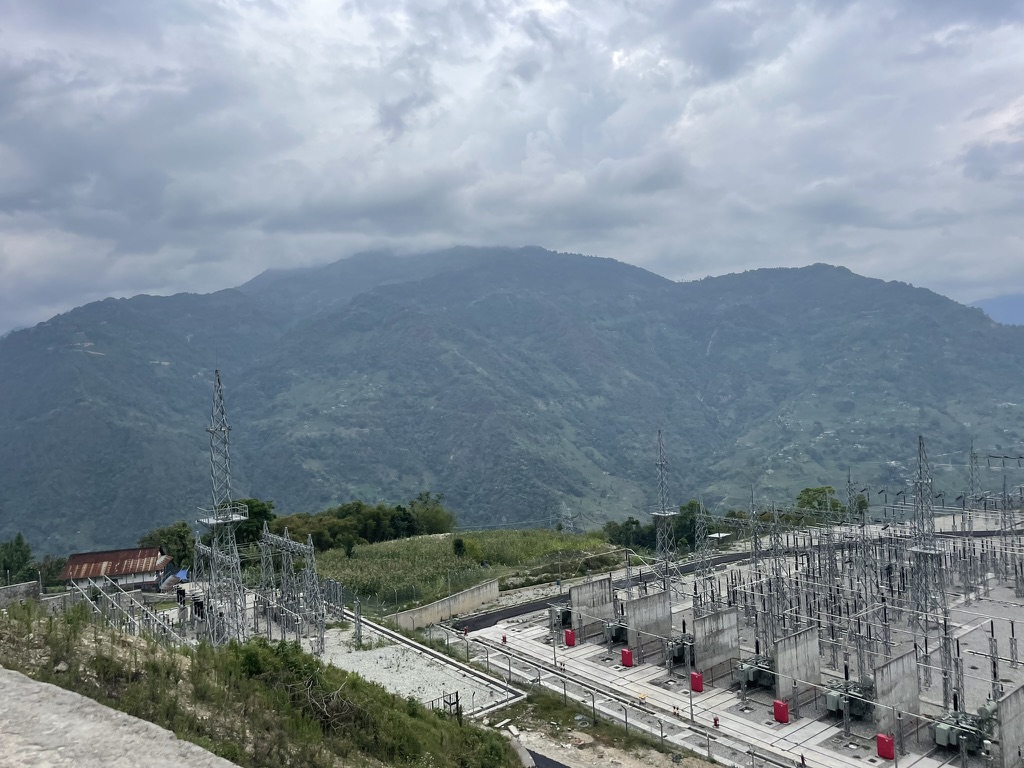During my time in Taplejung, Nepal, I had a number of impactful experiences and interactions with neighbors and members of the local community.
As I listen to my collection of field recordings from Dhungesaghu, distinct themes of change and development arise from the natural and human-made sounds. Change is evident in every experience and interaction that I reflect upon in this short essay.
One of the most striking examples of this change can be seen in relation to the roles of shamans or phedengbas in Dhungesaghu. While speaking with Chakimaya Limbu, a community member and friend, she explained that phedengbas are the heart of Dhungesaghu: “We cannot live without them.” A phedengba’s spiritual practice is an integral part of daily life in the village and beyond. Limbu people living abroad often ask family members to send recordings of the phedengba’s voice on Whatsapp or to be dialed in by phone during ceremonies. Eager to more deeply understand the nuances of this work, I met with one of the three phedengbas who perform Mundhum rituals in the community. It was an opportunity that I am incredibly grateful for; I did not take for granted that someone of such religious importance was willing to speak with me.
This phedengba, or more specifically yeva, explained a number of the many pujas that he oversees. These pujas address a range of environmental, social, and medical aspects of daily life. Phedengbas perform ritual ceremonies that mark transitions into and out of life as well as significant milestones in between. The rituals involved in bihaa (marriage) ceremonies have a unique connection to musical practice. In addition to contemporary Nepali instruments influenced by Brahman and Chetri culture, Limbu wedding ceremonies feature ke drumming performances and palam, or dan natch, a dance and vocal practice. Both of these traditions represent the web of relationships and mutual support that constitutes the community. During a Limbu marriage ceremony, forty to fifty community members take part in these musical rituals, spanning hours or even days, while others prepare raksi and tongba (forms of homemade alcohol), prepare meals for the community, or donate money to the bride and groom. These musical traditions will be further discussed in the section Music and Sound. The strength of these community relationships and fortitude of ritual practice can additionally be seen in ceremonies for those facing illness or for those who have passed on.
As my conversation with the phedengba progressed, I inquired about a distinctly different sphere of worship. Specifically, I asked questions that aimed to contextualize his spiritual practice within the physical environment. This line of inquiry revealed a number of rituals connected to the agricultural practices of Dhungesaghu. Pujas are performed for distinct seasons and cycles of agriculture. During the harvest of crops, a ceremony is performed to avoid bad luck in future agricultural seasons. Before an animal is slaughtered for meat, the phedengba is asked to perform a ritual as a demonstration of respect and gratitude. Other distinct rituals honor deities of the land, or jungledevi, and features, such as rivers and mountains, of the natural landscape. Many of these venerated natural forms are connected to the history of the Limbu people as referenced in Mundhum teachings.
I went on to ask the phedengba if there were any young people currently working to become phedengbas. He explained that one cannot become a phedengba by choice – rather it is a calling, a connection to Mundhum that others do not have. He does not know of any young people who have been called to a phedengba’s work in that way. For this reason, he shares his concerns that in subsequent decades, authentic phedengbas may disappear altogether. This change is seen not only in the spiritual structures that define Mundhum, but in the land in which Mundhum is practiced.
A three minute walk from the yeva’s home there is a power plant. It dominates the hillside with severe shades of gray, and has been under construction for nearly seven years. One home is a mere ten feet from its cemented foundation and barbed wire fence. Local children run along the jagged landscape, covered in the dust that the construction continuously generates. I asked my host father, Lok Chandra, about its impact in the community. He explained that four families were forcibly displaced by the Nepali government for the sake of this development project. They were paid a small amount to cover the expenses involved in leaving their homes and migrating out of the valley. If the phedengba’s home had been only slightly higher on the hill, he too, along with his vast knowledge of traditional practices, would have been forcibly displaced from Dhungesaghu.
